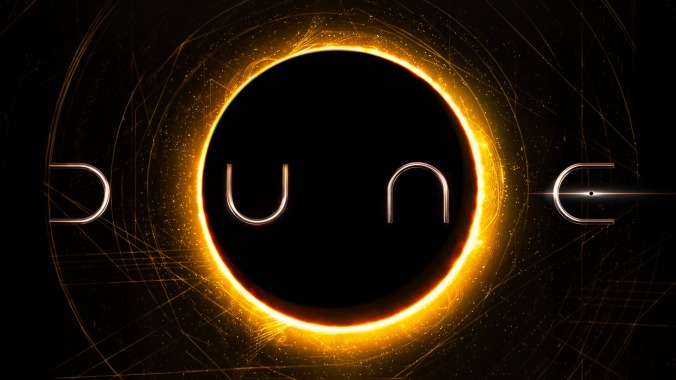Denis Villeneuve calls Dune "by far the most difficult thing I’ve done in my life”

Monday offered us our first look at Timothée “Sad Boy” Chalamet’s Paul Atreides, the protagonist of Frank Herbert’s sci-fi epic, Dune, as adapted by Arrival director and Academy darling Denis Villeneuve. Today, Vanity Fair is chasing that appetizer with a whole damn meal, peppered liberally with the story’s invaluable “spice.” In “Behold Dune,” the magazine’s Anthony Breznican chats with a number of the film’s key figures, including Villeneuve and Chalamet, and shares several new photos from the production.
Most intriguing, perhaps, are Villeneuve’s comments, which cover his decision to split the story into two movies and the ways in which he feels its themes speak to to our current reality. “I would not agree to make this adaptation of the book with one single movie,” he says. “The world is too complex. It’s a world that takes its power in details.”
He adds, “No matter what you believe, Earth is changing, and we will have to adapt. That’s why I think that Dune, this book, was written in the 20th century. It was a distant portrait of the reality of the oil and the capitalism and the exploitation—the overexploitation—of Earth. Today, things are just worse. It’s a coming-of-age story, but also a call for action for the youth.”
“It’s a book that tackles politics, religion, ecology, spirituality—and with a lot of characters,” Villeneuve continues. “I think that’s why it’s so difficult. Honestly, it’s by far the most difficult thing I’ve done in my life.”
We bet Alejandro Jodorowsky can relate.
Villeneuve and the cast also unpack some of the big changes he’s made to the fabric of the story. For one, he’s sought to amplify the representation of women, a decision that tracks in light of his Dune: The Sisterhood spin-off series about the Bene Gesserit. Rebecca Ferguson’s Lady Jessica, for example, is, per the article, “even more fearsome than before.” with a plot synopsis describing her as a “warrior priestess.”
“She’s a mother, she’s a concubine, she’s a soldier,” Ferguson says. “Denis was very respectful of Frank’s work in the book, [but] the quality of the arcs for much of the women have been brought up to a new level. There were some shifts he did, and they are beautifully portrayed now.”
Dr. Liet Kynes, meanwhile, will be depicted not as a white man, as in the books, but by a Black woman. Sharon Duncan-Brewster, who you may remember from Rogue One, plays the role. “What Denis had stated to me was there was a lack of female characters in his cast, and he had always been very feminist, pro-women, and wanted to write the role for a woman,” Duncan-Brewster told Vanity Fair. “This human being manages to basically keep the peace amongst many people. Women are very good at that, so why can’t Kynes be a woman? Why shouldn’t Kynes be a woman?”
Check out some photos of Ferguson and Duncan-Brewster below alongside first looks at characters played by Oscar Isaac, Javier Bardem, Josh Brolin, Jason Momoa, and the great Stephen McKinley Henderson—currently killing it on Devs—who’s been confirmed as Dune’s Thufir Hawat. You’ll also see Zendaya, who’s set aside Meechee for the mysterious Chani, a piercing figure that haunts the dreams of Chalamet’s Paul.








































